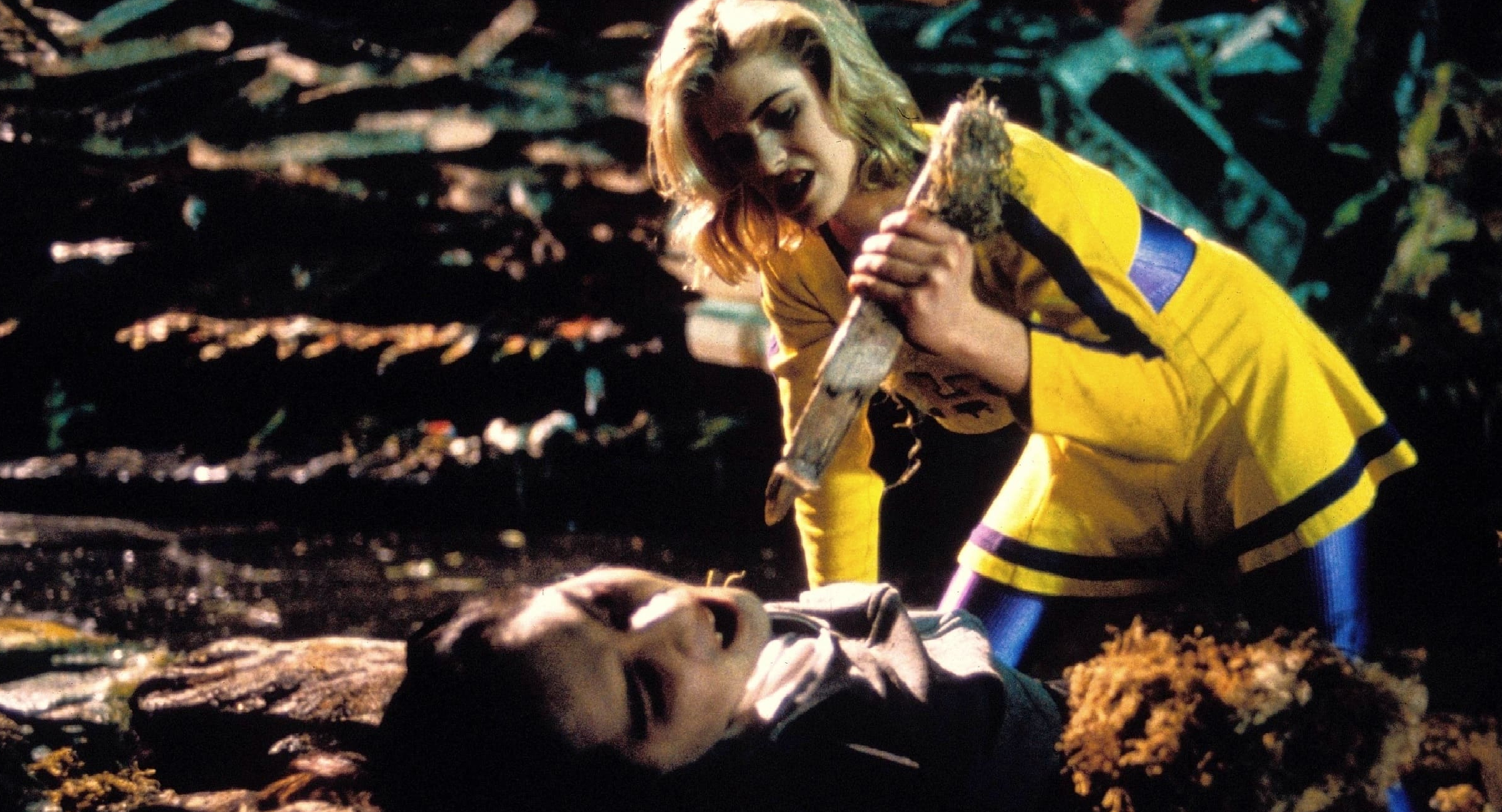Buffy the Vampire Slayer – Film Review
Published September 20, 2023

For Buffy Summers, nothing is the same after she meets Merrick Jamison-Smythe. Merrick tells the teen that he’s been sent to train her to fight vampires, and he proves himself by displaying his supernatural powers. Buffy is a quick study, and soon takes fellow student Oliver Pike under her wing, repeatedly saving him from fierce bloodsuckers. But, when a very dangerous vampire gets rambunctious, she must go to war again.
Buffy the Vampire Slayer is a film that has earned a place in the annals of cult classics. While it’s often praised for its campy charm and its role in laying the foundation for the immensely successful TV series of the same name, it falls short in many areas, making it deserving of a rather tepid 2 out of 5 rating.
The film’s premise centers around Buffy Summers, played by Kristy Swanson, a high school cheerleader who is chosen to be the “Slayer” – a young woman with superhuman abilities destined to battle vampires and other supernatural forces. The concept itself is intriguing, and it’s clear why it was adapted into a successful television series. However, the execution in this film leaves much to be desired.
One of the glaring weaknesses of Buffy the Vampire Slayer is its script and dialogue. Joss Whedon, the creator of the TV series, wrote the original screenplay, but the final product was heavily modified by the director and studio. The result is a mishmash of inconsistent tones and lackluster dialogue.
The attempts at humor often fall flat, with cheesy one-liners and forced quips that fail to elicit genuine laughs. The film struggles to strike a balance between horror, comedy, and teenage drama, making it feel disjointed and incoherent at times.
Buffy Summers is the central character, but her development in the film is shallow. She comes across as a stereotypical, shallow high school cheerleader at the beginning, and while her transformation into a formidable vampire slayer is meant to be a central arc, it feels rushed and lacks depth. Other characters suffer from similar issues, with most of them reduced to one-dimensional stereotypes.
Despite the weak material they had to work with, the cast does an admirable job. Kristy Swanson brings a certain level of charisma to Buffy, and her portrayal captures the character’s initial shallowness as well as her eventual growth. Donald Sutherland as Buffy’s mentor, Merrick, and Paul Reubens as the vampire Amilyn provide some entertaining moments, but their characters are underdeveloped.
It’s worth noting that this film marked the screen debut of Luke Perry, who would go on to achieve fame as Dylan McKay in Beverly Hills, 90210. Perry’s performance as Pike, a motorcycle-riding love interest for Buffy, is one of the highlights of the film. He injects a genuine sense of likability and charm into his character, which helps offset some of the film’s shortcomings.
For a low-budget ’90s film, Buffy the Vampire Slayer manages to deliver some reasonably entertaining action sequences and special effects. The vampire makeup and practical effects, while not groundbreaking, are decent for the time. The fight choreography, although not on par with later vampire-themed productions, serves its purpose and adds a bit of excitement.
The film’s pacing leaves much to be desired. It lurches between scenes without a smooth flow, making it feel disjointed. The editing often fails to build tension effectively, which is essential for a horror-action film like this one. Consequently, the stakes (no pun intended) never feel particularly high, and the film lacks a sense of urgency.
One of the strengths of the TV series that followed was its ability to tackle complex social issues through allegory and metaphor. Unfortunately, the film version of Buffy the Vampire Slayer lacks the depth and nuance of its successor. It fails to engage with the feminist undertones and commentary on the high school experience that became hallmarks of the TV show.
The film’s visual style and cinematography are serviceable but unremarkable. It lacks the distinctive look and atmosphere that later adaptations of the Buffyverse would embrace. The suburban setting doesn’t add any uniqueness to the film’s aesthetics, and the overall visual presentation is forgettable.
Buffy the Vampire Slayer holds a special place in pop culture for introducing the world to the character of Buffy Summers. The film’s moderate success paved the way for the creation of the beloved TV series, which remains a beloved cult classic to this day. The series expanded upon the themes and characters introduced in the film, ultimately overshadowing its predecessor.
**10. Conclusion**
Buffy the Vampire Slayer, directed by Fran Rubel Kuzui, is a film with a promising premise but fails to deliver on its potential due to a weak script, shallow character development, and inconsistent tone. While it does have some redeeming qualities, such as Luke Perry’s charismatic performance and a few entertaining action sequences, it ultimately falls short of what fans of the Buffyverse have come to expect. It’s best viewed as a curious artifact that paved the way for the far superior television series, which remains the definitive incarnation of Buffy Summers’ story.
